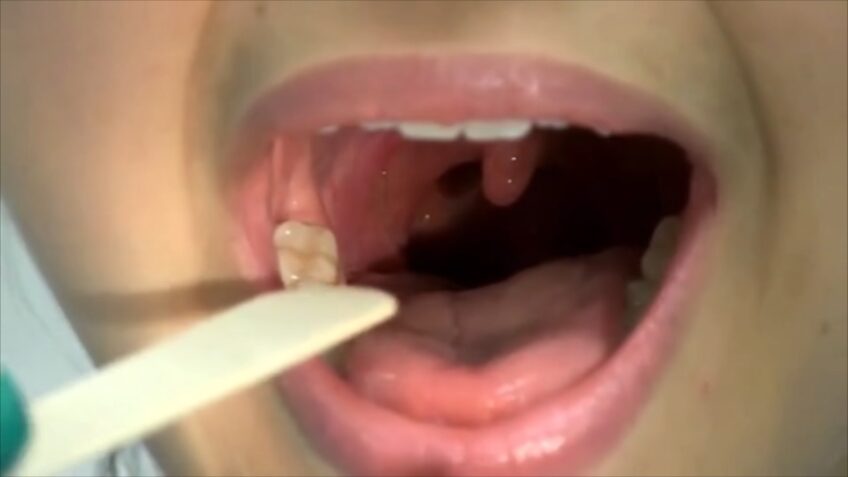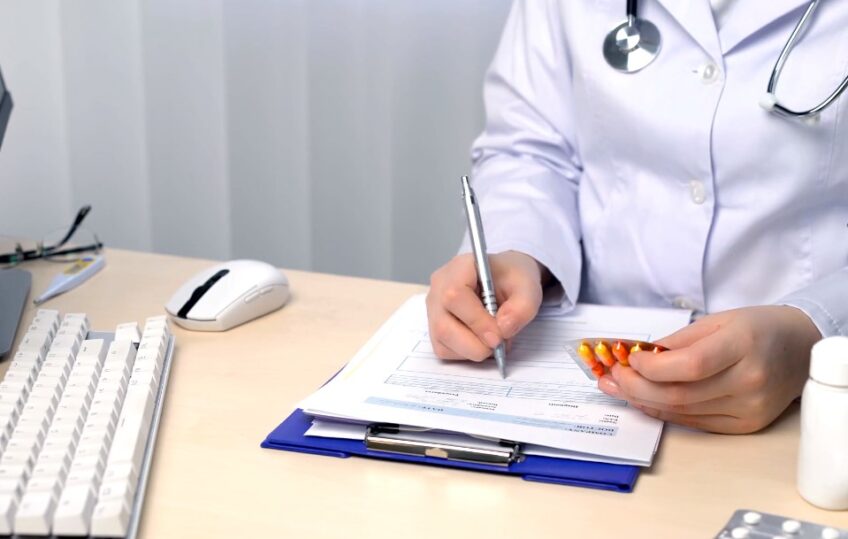Chlamydia, commonly associated with reproductive organs, can also manifest itself in the throat. This often-overlooked facet of the infection can be just as impactful, and yet many are unaware of its existence or potential dangers. Below, we will talk about the lesser-known aspect of chlamydia, unpacking the details and providing you with essential knowledge on prevention, symptoms, and treatments.
An Overview
Chlamydia, caused by the bacterium Chlamydia trachomatis, is one of the most commonly reported sexually transmitted infections (STIs) worldwide. Although most commonly associated with genital infection, it can also be found in the rectum and throat.
How Is This Infection Contracted?
- Genital Contact: The most common way to get chlamydia is through unprotected vaginal, anal, or oral sex with someone who has the infection.
- Mother-to-Child: Pregnant women with chlamydia can pass the infection to their baby during childbirth.
- Sharing Sex Toys: If not cleaned properly between uses.
Risk Factors
Factors increasing the risk of acquiring a throat chlamydia infection include:
- Unprotected Oral Sex: With a partner who is infected with genital or rectal chlamydia.
- Multiple Sexual Partners: The more partners, the higher the risk of STI exposure.
- Previous STIs: Individuals who have had other STIs are at a higher risk.
Throat Chlamydia: Symptoms & Detection

Throat chlamydia, while less common than genital or rectal variations, is essential to recognize. Being informed about its symptoms can make a world of difference in detection and treatment.
Recognizing the Symptoms
Most people with chlamydia in the throat don’t exhibit any symptoms. However, for those who do, some of the signs might include:
- Sore Throat: Mild discomfort, a scratchy sensation, or pain in the throat.
- Swollen Glands: Particularly in the neck.
- Fever: Although it’s less common, some people might experience a low-grade fever.
Detection and Testing
- Swab Test: A healthcare professional will take a swab from the back of the throat. The sample is then tested for the presence of the Chlamydia trachomatis bacterium.
- Why Testing is Important: Even if you show no symptoms, getting tested ensures that you don’t unknowingly transmit the infection to others. Plus, untreated chlamydia can lead to more severe health problems down the line.
Treatment and Prevention

Fortunately, this infection is treatable. Armed with the right information, you can effectively protect yourself and seek timely treatment if needed.
Effective Treatment Options
Chlamydia is usually treated with antibiotics. For throat variation, the typical treatment includes:
- Azithromycin: This is often given as a one-time dose.
- Doxycycline: This is taken twice daily, typically for a week.
It’s essential to complete the full course of antibiotics, even if symptoms dissipate. Additionally, refrain from oral, vaginal, or anal sex until the infection has been entirely cleared to prevent passing it on.
Prevention: Stay Safe
While chlamydia is common, prevention is entirely possible. Some effective prevention measures include:
- Barrier Methods: Use dental dams or condoms during oral sex.
- Regular Testing: Especially if you have multiple partners or are unsure of a partner’s STI status.
- Open Communication: Discuss STI testing and histories with potential partners. This can significantly reduce the risk of transmission.
Common Myths & Misconceptions
Misinformation can lead to unnecessary panic or negligence. Addressing common myths surrounding throat chlamydia can clear confusion and improve public health responses.
Myth-busting: What’s True and What’s Not?
- Myth: Throat chlamydia clears on its own without treatment.
- Fact: While some cases might resolve without intervention, leaving chlamydia untreated can pose risks and potentially spread the infection to others.
- Myth: You can’t get chlamydia in the throat if you’ve had it before.
- Fact: Previous infection doesn’t provide immunity. You can get infected multiple times.
- Myth: If you don’t have symptoms, you don’t need to get tested.
- Fact: Many people with chlamydia, especially in the throat, show no symptoms. Regular testing is essential, especially if you’re sexually active with multiple partners.
The Impact of Ignorance
Ignoring symptoms or believing in myths can:
- Delay Treatment: This can lead to complications.
- Increase Spread: As individuals may unknowingly transmit the infection.
- Cause Unnecessary Stress: As misinformation can induce unwarranted fears or complacency.
Complications & Long-Term Impact

Chlamydia, when untreated, can have more profound implications. Understanding these can underscore the importance of early detection and treatment.
Possible Complications
- Spread of Infection: Chlamydia in the throat can potentially spread to other parts of the body, including the genitals and rectum.
- Co-infection: There’s an increased risk of acquiring or transmitting HIV if exposed while having any untreated STI, including chlamydia.
- Reiter’s Syndrome: A rare form of arthritis that can be triggered by a chlamydia infection in some individuals.
Addressing the Stigma
Stigma can deter individuals from seeking treatment. It’s essential to:
- Educate Communities: Dispel myths and share information.
- Encourage Open Conversations: Breaking the silence can be empowering and informative.
- Advocate for Regular Health Check-ups: Normalize routine STI testing as part of standard healthcare.
The Social Aspect: Navigating Conversations and Relationships

Talking about STIs, especially something less commonly discussed like throat chlamydia, can be challenging. However, fostering open dialogues is essential for personal and communal well-being.
Navigating Conversations
- Timing Matters: Choose a calm, private environment for these discussions. Ensure both parties are relaxed and free from distractions.
- Stay Informed: Understand the facts, so you can address concerns, misconceptions, or questions effectively.
- Listen Actively: It’s as much about hearing the other person as it is about conveying information.
The Role of Empathy
Empathy can be a game-changer in STI discussions. Remember:
- No Blame Game: STIs are common, and playing the blame game isn’t productive. Focus on solutions and understanding.
- Support Systems: Offer support if a partner is diagnosed, and seek support if you are. There’s strength in unity.
Resources and Support

Finding credible sources of information and platforms that offer support can make a huge difference for those looking to understand or deal with throat chlamydia.
Trusted Online Resources
- CDC (Centers for Disease Control and Prevention): A leading national public health institute offering a wealth of information on all STIs, including chlamydia.
- WHO (World Health Organization): Provides global insights and guidelines on sexual health matters.
- Planned Parenthood: Offers comprehensive information on prevention, detection, and treatment.
Support Groups and Counseling
Many local communities offer STI support groups, where individuals can share experiences, advice, and coping strategies. Counseling, especially from professionals specializing in sexual health, can provide emotional support, coping mechanisms, and more tailored advice.
FAQs
What are the symptoms of oral chlamydia?
Many people with this infection do not exhibit symptoms. However, when symptoms do appear, they may include a sore throat, redness in the mouth or throat, swollen tonsils, swollen lymph nodes in the neck, bumps on the tongue, mouth pain, mouth sores, white spots in the back of the throat or tonsils, sores around the lips, mild fever, and fatigue.
How prevalent is oral chlamydia?
It is less common than genital variation. Research indicates that around 10% of people visiting an STD clinic have genital variation, while only about 1.5% have oral variation.
How is oral chlamydia diagnosed?
The most accurate method for diagnosing is through a swab test. The healthcare provider swabs the mouth and throat and sends the sample to a lab for evaluation using a nucleic acid amplification test (NAAT).
How is oral chlamydia treated?
It can be treated with antibiotics. The preferred treatment is 100 mg of doxycycline taken orally twice daily for seven days. Alternative treatments include a single dose of 1 gram of Zithromax (azithromycin) or 500 mg of Levaquin (levofloxacin) taken orally once daily for seven days.
What are the complications of untreated oral chlamydia?
If left untreated, this infection can lead to secondary oral infections, dental pain, gum disease, and other complications. Moreover, individuals with undiagnosed infection can transmit it to others.
Can oral chlamydia increase the risk of HIV?
Yes, having this infection can increase the risk of HIV because it triggers an inflammatory response that attracts CD4 T-cells, which are targeted by HIV, to the site of the infection.
How can oral chlamydia be prevented?
Abstinence is the only surefire way to avoid it. However, reducing the number of sex partners and consistently using condoms or dental dams can also lower the risk.
Is oral chlamydia a common condition?
While it is not very common, it could indicate the presence of chlamydia in the genitals or anus. It’s essential to get tested if you suspect exposure to this infection or any other STD, even if symptoms are mild or absent.
Final Words
While throat chlamydia might not be as widely recognized as its genital counterpart, awareness is key. Recognizing the risks, understanding the symptoms, and knowing your treatment options can help ensure that you stay safe and healthy. So, remember to stay informed, practice safe intimacy, and communicate openly with your partners.

